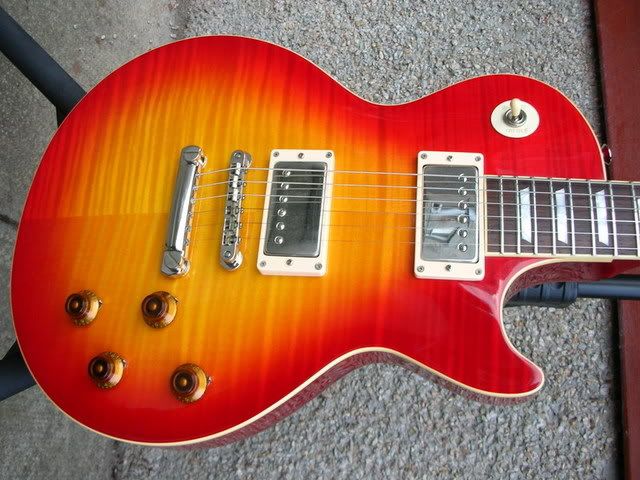cherryburst
Well-known member
My LS125 SEB is specced as having a "flamed sycamore on two piece maple top".
What's the story with the sycamore element? I've never heard of it being used in this way. It seems to give a convincing flamed maple effect on my guitar as pictured below, but why not just use a maple veneer (I assume it is a veneer and not some kind of photo flame). So why sycamore - is it simply cheaper, is that it?
Here's an example - Coco in all her clownish glory (pickguard en route)

What's the story with the sycamore element? I've never heard of it being used in this way. It seems to give a convincing flamed maple effect on my guitar as pictured below, but why not just use a maple veneer (I assume it is a veneer and not some kind of photo flame). So why sycamore - is it simply cheaper, is that it?
Here's an example - Coco in all her clownish glory (pickguard en route)






